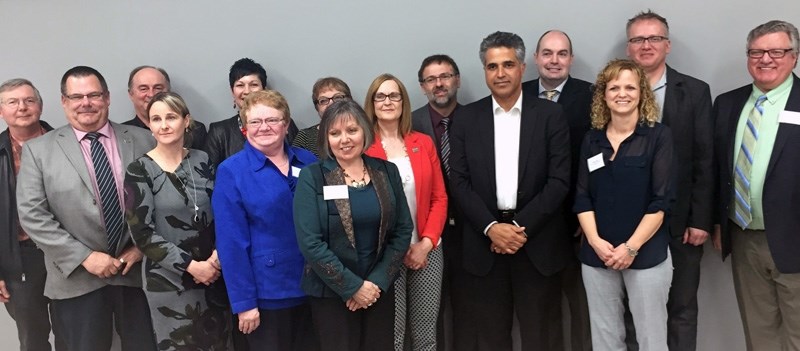Albertaís Human Services Minister Irfan Sabir met with community and social services groups in Athabasca last Tuesday to discuss issues facing the community.
Sabir had a meeting with Athabasca-Sturgeon-Redwater MLA Colin Piquette, Athabasca County Reeve Doris Splane, and Town of Athabasca Mayor Roger Morrill and representatives from 10 other local organizations on Mar. 29, part of a two-stop tour of the north that included Slave Lake.
The minister sat down with the Advocate later that day to talk about the issues raised by the groups and discuss what the provincial government is doing to tackle them.
ìI just want to assure the community that their government is there for them, and we will work in collaboration with community partners and make sure that all Albertans have the needed and necessary supports during these tough times,î Sabir said.
Rural transportation
The biggest issue the organizations highlighted to him, Sabir noted, was rural transportation.
ìThat was pretty much the constant theme,î he said. ìOur government recognizes that and Minister (Brian) Mason ñ the minister of Transportation (and Infrastructure) ñ has launched a consultation, and money has been set aside to improve rural transportation.î
Earlier in March, Mason announced a province-wide consultation with urban and rural municipalities, along with an online public survey that would eventually form a provincial transportation strategy.
Job loss
Job loss and the struggling economy had made things challenging for families, Sabir added.
One of the ways he said the government would be helping families would be through the Alberta Child Benefit and the Alberta Family Employment Tax Credit for low- and middle-income families with children.
Families that bring in $41,250 or less are eligible for both tax credits. Under the Alberta Child Benefit, families receive a tax credit per child ñ from $1,100 for one child up to $2,760 for four or more.
Families are automatically eligible when they file their 2015 taxes before April 30.
ìBoth these benefits will provide $340 million to low-income Albertans,î he said. ìItís estimated that 300,000 children will benefit from that.î
The first payments will be mailed out this summer.
Addictions, mental health
Sabir added that the provincial government would be taking the first steps to work with rural and urban groups to address mental health and addiction services.
Movement on the issue came on the heels of a December 2015 review by MLA David Swann and Minister of Municipal Affairs Danielle Larivee on the state of mental health services in the province.
The review recommended partner with First Nations communities to address mental health needs, add more beds for addiction treatment, and provide online access to mental health services for youth and kids.
ìThat report details the state of services across the province and the recommendations basically are focused on both rural and urban,î Sabir noted. ìAnd as a matter of principle, regardless of where Albertans live, they should have access to the same services.î
Increased funding
On a positive note, Sabir said that he was pleased to see the level of co-operation and collaboration among the local service providers, who in turn told him that they were pleased with additional funding from the government.
ìThe stakeholders around the table were very happy that that program allows them the flexibility to come up with programs to deal with their local issues,î he said.
Last September, the government raised funding for Family and Community Support Services (FCSS) by $10 million. Another $3.5 million from the Family and Community Safety Program grant was given to community programs tackling domestic violence through support of women and girls, indigenous, immigrant and rural communities, as well as programs for men and boys.
Healthy Families Healthy Futures in Athabasca, Westlock and Barrhead received a portion of that grant in 2015.



